GS 350 puts stealth Lexus on the street
By John Gilbert
LAS VEGAS, NEV. — On my first lap around the special cone-lined handling course Lexus had set up at Las Vegas Speedway, I powered the Lexus GS 350 through a 90-degree left turn when, facing a bit of a straight chute, something caused me to glance upward. A pair of sleek jet fighter planes, cruising in to land at the nearby Air Force base, glided across my line of vision.
I told the Lexus folks that was unnecessary inspiration. We were sufficiently fired up to drive the 2013 mid-luxury GS models hard enough around the handling course and the adjacent autocross, although I had to admit, watching those F-18 and Stealth fighter planes circling above pushed us to push this new sports-luxury sedan to its limits.
Anticipation for a Lexus introduction is often of technology in a softly comfortable car that is extremely competent, with strong engineering, but stressing luxury and amenities more than performance. The GS has been a Lexus holdout, however, always striving to be a European-like sedan that added sporty performance to Lexus, Toyota’s luxury division.
I suggested that Toyota had better watch its step. First, the compact Lexus IS-F is a blast to drive, and then, in the never-ending duel of base models on the Toyota side, the new 2012 Camry quietly goes past the Honda Accord in sportiness by firming things up and offering its 4-cylinder with a 6-speed automatic and steering-wheel paddles — two sporty features unavailable on the Accord. Now comes the new-for-2013, fourth-generation GS350, impressive in base form, spectacular in F-Sport, and futuristic with its GS450h hybrid alternative. This all could ruin that soft, luxurious image, which Lexus has developed. No chance of that, however, because the GS impressively improves its sporty performance and handling with numerous engineering and performance tactics, without overlooking any luxury concepts.
The GS remains basically a rear-drive sedan as if that alone assures sportiness, but Lexus covers all wheels, as well as bases, by offering optional all-wheel drive, and even all-wheel steering. In combination, all of that thrusts the GS 350 into valid competition with the mid-level German performance sedans, such as the BMW 5-Series, Mercedes E-Class, and Audi A6. And the F Sport version infringes on territory previously reserved for the M5, AMG, and S6 models of those German counterparts.
The standard GS 350 is well-equipped in basic form, with plenty of standard features, starting with 17-inch alloy wheels, 10-way power seats, and the creature comforts Lexus buyers expect, all wrapped in a new body with what Lexus says is the new “spindle†grille that will become a Lexus signature, on an altered platform that once held the Supra and the SC 430.
The car will reach showrooms in February, which is when prices will be divulged. It will come only with a 3.5-liter V6 engine, but it is plenty potent, kicking out 306 horsepower at 6,400 RPMs (red-line 6,600), and 277 foot-pounds of torque at 4,800. It places fuel injectors both in the combustion chamber and the air-fuel runners, giving it both direct and port injection, but it wants costlier 91-octane premium fuel.
The major variations of the GS 350 are to pick the Premium package, which adds 18-inch wheels, rain-sensing wipers, heated and ventilated front seats, and a power rear sunshade. The Luxury package — remember, “Luxury†ranks above “Premium†in Lexus lexicon, which we can call Lexus-con — will get you everything on the Premium list, plus adaptive suspension, adaptive headlights, 18-way power seats, and rear heat-air controls.
The F Sport, with its available 19-inch wheels, with 235/40 front and 265/35 rear tires, uses the same V6 power, with standard four-wheel steering. But it looks meaner, with a mesh grille and retuned suspension with firmer springs, variable dampers, thicker stabilizer bars, variable gear ratios, altered bushings on the shock components, and bigger and stronger front brakes, and stark interior features, with 16-way power seats. Read more
CR-V renews duel with Escape at LA show
By John Gilbert
LOS ANGELES, CALIF. — The earthquake and ensuing tsunami that struck Japan in March of 2011 affected the supply of parts enough to set back production of Japanese automakers all around the world. For Honda, the resulting shortage of the Honda CR-V compact crossover helped Ford Escape sales shoot by and supplant the CR-V as the top-selling SUV in the U.S.
If the Escape and CR-V are going to duel for supremacy in 2012, they will be doing it with entirely new vehicles — unveiled to the public for the first time at the Los Angeles Auto Show. Other indications from the same show, which runs through Thanksgiving Weekend, are that the new Escape and CR-V will have plenty of competition.
Much like golf and tennis, the auto show circuit in the United States also has its four “majors,†which stand above the numerous regional shows to compete with each other, and the Los Angeles Auto Show kicks off the new season, to be followed by the Detroit Auto Show in early January, the Chicago Auto Show in February, and the New York Auto Show, which comes in April.
Since moving its date to November, the L.A. show has gained prestige, and last year may have become the most significant, with the domestic Big Three all moving some of their biggest introductions from Detroit to L.A. The Chevrolet Volt, Ford EcoBoost models, and Chrysler’s resurgent redesigns under Fiat tutelage all jumped to join the previously import-dominated Los Angeles show.
With only a few key vehicles, such as the Ford Fusion and Chevrolet Malibu, being held off for Detroit, this year’s Los Angeles show stakes its importance on another strong array of new products, led by the Escape, the CR-V, and other compact crossover SUVs such as the Mazda CX-5, plus production versions of the Range Rover Evoque, and Mercedes ML320.
The CR-V became available to the automotive media a month earlier than the show, but Honda restricted reports on the new vehicle until its official introduction, which came at the L.A. Show. The new CR-V has totally new design in its fourth generation.
The first CR-V was a 1997 model, and was an interesting attempt at making an all-wheel-drive compact utility vehicle. It sold well, competing with the Toyota RAV4 in popularity, and its first renewal came for 2002 when its shape was refined and less boxy. The third generation came in 2007, and closely followed the RAV4’s new model, which was lengthened by more than a foot and added a third-row seat and a V6 engine option. Honda stuck by its more-compact design, with two rows of seats and only a strong 4-cylinder, and it left critics — as well as the RAV4 — behind in sales by taking over the No. 1 slot.
That third-generation model was a considerable change in appearance, with something like a half-circle silhouette rising from the windshield and tapering off to the rear deck. It continued to demonstrate a combination of size, performance and versatile packaging, coupled with with a high standard of initial build quality to remain No. 1 in sales through 2010.
Akio Tonomura, CR-V project leader for Honda, said the vehicle has matured from its first “comfortable runabout†stature through the more-recent casual-formal model that sold 4.9 million in 160 countries. Competition has increased, with impressive new compact crossovers that include the Hyundai Tucson and Kia Rio from Korea, the Nissan Rogue, as well as the RAV4 and the Escape, which grew from an original design for the Mazda Tribute. Changing lifestyles and the economic slump and environmental problems have affected the marketplace.
“But the wants of consumers are unchanged,†said Tonomura. “The fourth generation CR-V improves on being efficient, functional and confident, fused together through synergy. It has the comfort of a passenger car, the versatility of a minivan, and the confidence of an SUV. Only the CR-V can top the CR-V.†Read more
2012 Beetle adds athletic style to ‘cute’
By John Gilbert
Model renovations occur every four or five years throughout the auto industry, but not at Volkswagen. When the German company says its 2012 Beetle is “all-new,†don’t dismiss it as routine — it is only the second renovation in the car’s 74-year lifetime.
The first VW was produced in 1938, and was called “Volkswagen,†or the “people’s car.†By 1949, it was brought into the U.S., where people were charmed by the novelty of such a small and economic car, with its rounded-roofline, which resembled a beetle, so they started calling it the “Beetle,†with “Bug†as its nickname. Just as well, because the expanding company itself by then was known as Volkswagen. The Beetle’s familiar shape continued south of the border, until 2003, when the last one was produced in its Mexican plant.
Meanwhile, in 1998, Volkswagen decided to resurrect its icon, replacing the rear-drive car with a larger, retro-modern front-wheel-drive second generation. It was called the “New Beetle,†to recall its predecessor but also put distance between the two.
Together, Beetles and New Beetles sold over 21.5-million worldwide, with over half of annual sales in the U.S. Owners all agreed they were steady, dependable, economical, user-friendly, and charmingly cute. But the word performance was never be used to describe those Beetles.
It doesn’t take long behind the wheel of the 2012 Beetle to realize the assessment must change from “cute little car†to “cute little car; goes like hell.â€
It’s not a street racer, but its quick responses are closer to a sports coupe than a car with such familiar charm.
The new generation car sheds the “New†and again is called “Beetle,†and it rides on a new platform with a wider and lower stance and firmer suspension. It is stretched 6 inches, to 168.4 inches, on a 99.9-inch wheelbase; it is 71.2 inches wide, 3.3-inches more; and it stands 58.5 inches tall, a half-inch lower than the New Beetle.
Its updated engines include the surprisingly strong 2.5-liter 5-cylinder, and the hot, 200-horsepower 2.0-liter 4-cylinder turbo — of Golf and GTI prominence.
It’s not GTI-hot, but it performs with enough spirit to give you pleasure whenever you drive it, and an extra kick whenever you find the need to push it a little. Or a lot. I enjoyed the feel of the bright red test vehicle, but I hadn’t pushed it hard, until one night when I was driving through Minneapolis on Interstate 94 at about 11 p.m. A rude and aggressive driver in a large Tahoe SUV had come up behind a row of cars in the left lane, closing to within 10 feet of each and flashing its lights urgently, virtually forcing them to pull over.
I moved into the far right lane because I was nearing the exit onto westbound 394, satisfied that I had gotten clear of that bozo in the process. The serpentine-like exit ramp bends gently up and to the right, then makes a hard, sweeping left, before a more gradual right blends into 394. I caught a glimpse of the big SUV, speeding up the left, then veering into the middle lane. I wanted no part of being cut off or run off the road, so I gave the Beetle a dose of gas and accelerated. As if on cue, the Tahoe cut in behind me, surging right up onto my tailpipes as we started up the exit. Annoyed, and seeking refuge, I downshifted and hammered the gas pedal. The Beetle surprised me, zipping up the ramp to the right, and staying flat enough that I could keep accelerating around the hard left curve. It held its flat attitude as I powered through the esses, and when I glanced in the rear-view mirror, there was no Tahoe for several seconds.
Finally, its headlights appeared, a half-block back. About a mile later, I was cruising at the speed limit in the right lane when the Tahoe roared past in the left lane, going about 75 or 80. Last call, or Big Mama’s curfew, must have been urgently calling, but I got a chuckle at the incongruity of that big, V8-powered SUV being unable to stay with the cute, little Beetle around a series of curves. Read more
Kia Rio scrambles 2012 subcompact list
By John Gilbert
The Kia Rio evolved up through the 2011 model year into a pretty decent subcompact car, with its low initial price, 10-year, 100,000-mile warranty, and rank of “not bad†for styling, roominess, economy, and performance.
That was “then,†as of 2011’s rapidly ending model year, and this is “now,†the future, as of the introduction of the 2012 Rio, which reinforces the low-price/long-warranty tradition but vaults beyond that to the upper echelon of subcompacts. It raises the rank from “not bad†to “outstanding†for performance and economy, roominess, solid safety construction, advanced technology, and dramatic looks. Styling, admittedly, is in the eye of the beholder, but you soon notice that virtually all of the beholders have their eyes on the Rio.
“Consumers initially buy with their eyes,†said Ralph Tjoa, national manager of Kia’s product planning. “We’ve changed just about everything — the engine, transmission and platform — and improved its fuel economy, value and safety. It’s no longer a penalty box; now it’s a box suite.â€
Kia’s rise from back lot to suite-level has escalated dramatically in the last two years, as it finds ways to slip out of the shadow of Hyundai, its corporate parent and partner, and by far the leading auto manufacturer in Korea. Kia might have became the latest “former†Korean automaker, had Hyundai not taken over to streamline it manufacturing, drivetrains, platforms and technical advances. As Hyundai shot up to prominence, particularly with the introduction of the 2011 Sonata, Kia followed along dutifully, with quite similar vehicles in every category. Kia made a bold departure when it hired Peter Schreyer, a designer from Audi. His top achievement so far is the 2011 Kia Optima, which followed Hyundai’s sizzling and high-tech midsize Sonata and set its own styling standard.
Schreyer had nothing to do with the Soul, a boxy but popular subcompact with hamster-induced advertising success, but he did have a hand in the Sportage, a stylish crossover SUV based on the Hyundai Tucson. Hyundai struck marketplace gold with its new Elantra compact this year, while Kia already has its Forte. The subcompact segment was next, and Hyundai’s exceptional remake of the Accent is loaded with technical and performance advances, full of features and capable of 40-miles-per-gallon for $14,000.
Hyundai continues to stress technology aimed at economy, and Kia seeks to be sportier and more style oriented. Hyundai’s Elantra, Accent, and sporty coupe Veloster — based on the Elantra platform, with the slick new 1.6 Accent engine — are all candidates with considerable merit for the 2012 North American Car of the Year.
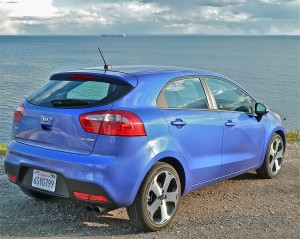
Out first as a sporty hatchback, a sleek Rio sedan will follow offering 40 mpg at prices from $13,000 and up.
Against that Hyundai hat trick from its partner/parent, Kia unveils the Rio — its uniquely styled version of the Accent. Hyundai executives might wonder if one of their trio might win Car of the Year, but the Kia Rio offers stiff competition from yet another Korean candidate.
The subcompact segment is expected to sell 400,000 vehicles for the 2011 model year, and Kia estimates it will double by 2015, because of continued U.S. determination to downsize to inexpensive and economical cars that also can have some flair. The segment has expanded with all new cars such as the Ford Fiesta, Chevrolet Sonic, Fiat 500, Mini Cooper, Honda Fit, Mazda2, Toyota Yaris and several Scion models, and Nissan Versa. Kia officials are determined to prove the Rio is prominent against such cars. Read more
Mazda3 shoots for the ‘Skyactiv’
By John Gilbert
HOLLYWOOD, CALIF. — Mazda’s new “Skyactiv†technology combines something old, a lot of new, and — without stepping on the tradition of the current Mazda3 — pulls off a complete holistic renovation of the company’s most successful model for 2012.
It is a signal of the modernization of Mazda’s car-building future, at the same time, because the Mazda3 compact represents 40 percent of all Mazda business in the U.S., where half of the 3-million-plus Mazda3s have been sold since the car replaced the Protege for the 2004 model year. The car underwent a full makeover for 2010, so the new model’s look is altered only slightly. But it is vastly changed beneath the skin.
To introduce the new car and its radical technology, Mazda chose the Hollywood Roosevelt Hotel, which, compared to the ultramodern locations usually chosen for new-car introductions, may have seemed an unusual site. But the hotel, like the car, has been completely renovated, with a unique combination of modern amenities while retaining a connection to the Roosevelt’s rich history, which is reflected on every floor and in every room. The hospitality suite Mazda used for the assembled auto journalists was, in fact, where Marilyn Monroe actually resided for three years. Reports persist that some guests in recent years have claimed that a room or two are occasionally visited by the friendly spirits of past residents.
Similarly, Mazda, which has a tradition of no-compromise performance, has completed the thorough renovation of the 2012 Mazda3 without losing touch with the car’s historic stature. Mazda’s all-consuming approach to modernizing the car upgrades Mazda3 fuel-efficiency to the 40-miles-per-gallon range rather than 30, while expanding its tradition of enjoyable and affordable performance. The look remains very similar, but the new and progressive Skyactiv technology alters its engines, transmissions, chassis structure, electronic connectivity features, aerodynamic efficiency on the outside, and improved ergonomics of the design inside.
Climbing inside both the Mazda3 sedan and hatchback, with both the stick and automatic, and driving down Hollywood Boulevard and up through the hills to Rochester Ranch, and back, gave us the opportunity to run the cars, and some competitors, through all the paces of urban, rural, mountain and freeway driving. Performance was typically quick and agile, the new engine and transmissions brought the tightness of the car to life, and the steering and suspension, and even the simplified instrumentation, seemed totally coordinated.
Mazda has never approached the hefty sales figures of Toyota, Honda or Nissan among its Japanese rivals, but its cars often attained better fuel economy and always have stressed being sportier to drive. Japanese manufacturers moved to the top of the industry with models capable of 30-miles-per-gallon a couple of decades ago. They might have been satisfied with that, leaving room for other companies, most notably Korea’s Hyundai, to lead the charge to make 40 the new 30 for contemporary gasoline-engine fuel economy potential. The Ford Focus and Fiesta, and the Chevrolet Cruze offer new models that will hit 40, forcing Honda, Toyota and Nissan to hustle out with special versions of current models to reach 40 with specially tweaked existing engines. Read more


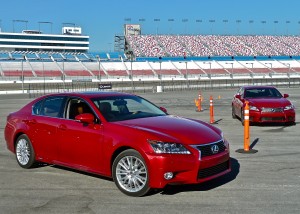
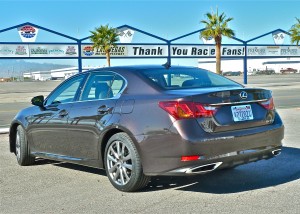
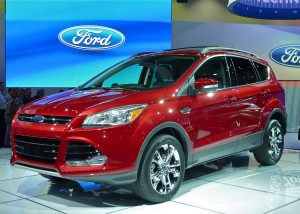
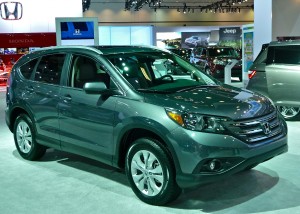
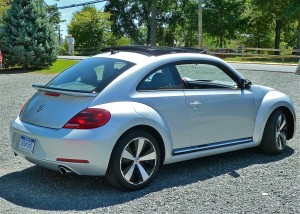
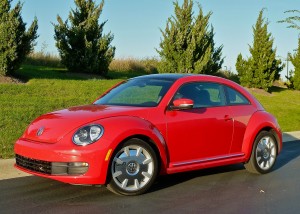
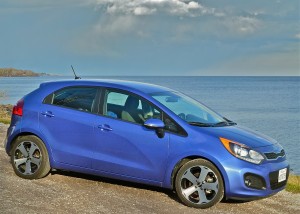
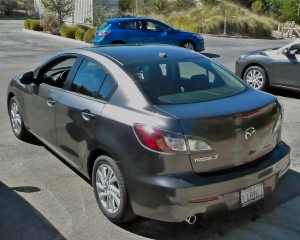
 John Gilbert is a lifetime Minnesotan and career journalist, specializing in cars and sports during and since spending 30 years at the Minneapolis Tribune, now the Star Tribune. More recently, he has continued translating the high-tech world of autos and sharing his passionate insights as a freelance writer/photographer/broadcaster. A member of the prestigious North American Car and Truck of the Year jury since 1993. John can be heard Monday-Friday from 9-11am on 610 KDAL(www.kdal610.com) on the "John Gilbert Show," and writes a column in the Duluth Reader.
John Gilbert is a lifetime Minnesotan and career journalist, specializing in cars and sports during and since spending 30 years at the Minneapolis Tribune, now the Star Tribune. More recently, he has continued translating the high-tech world of autos and sharing his passionate insights as a freelance writer/photographer/broadcaster. A member of the prestigious North American Car and Truck of the Year jury since 1993. John can be heard Monday-Friday from 9-11am on 610 KDAL(www.kdal610.com) on the "John Gilbert Show," and writes a column in the Duluth Reader.